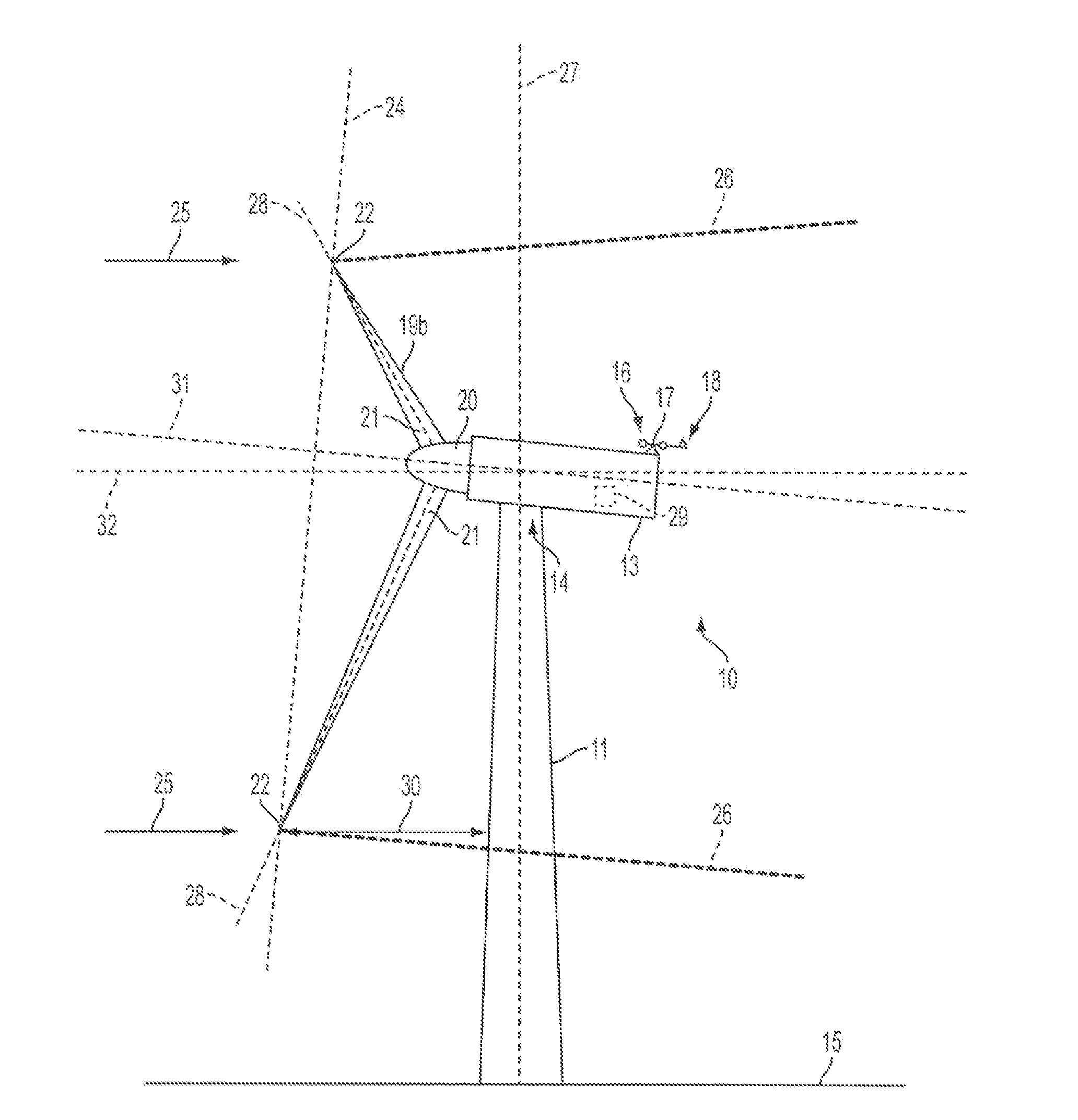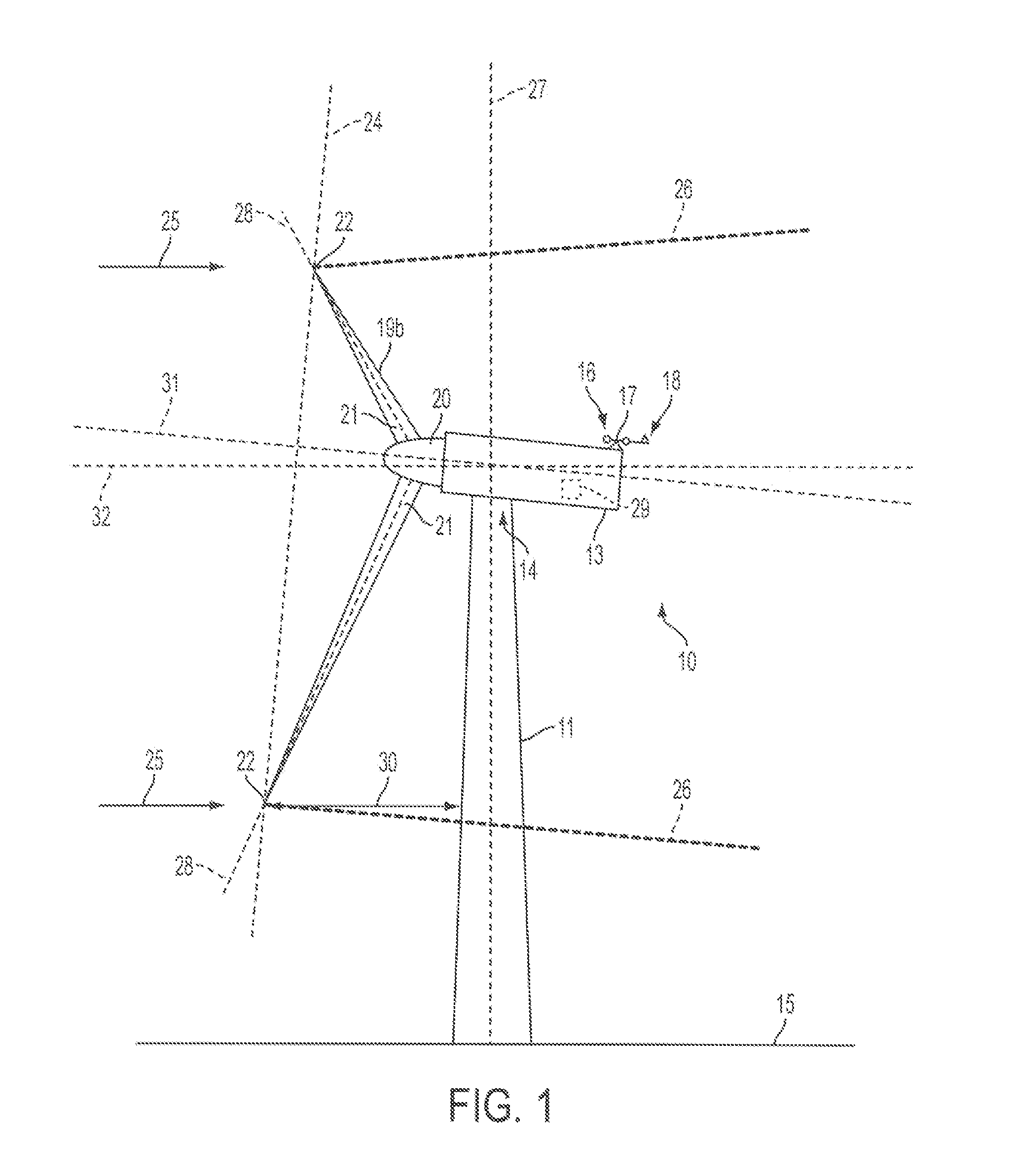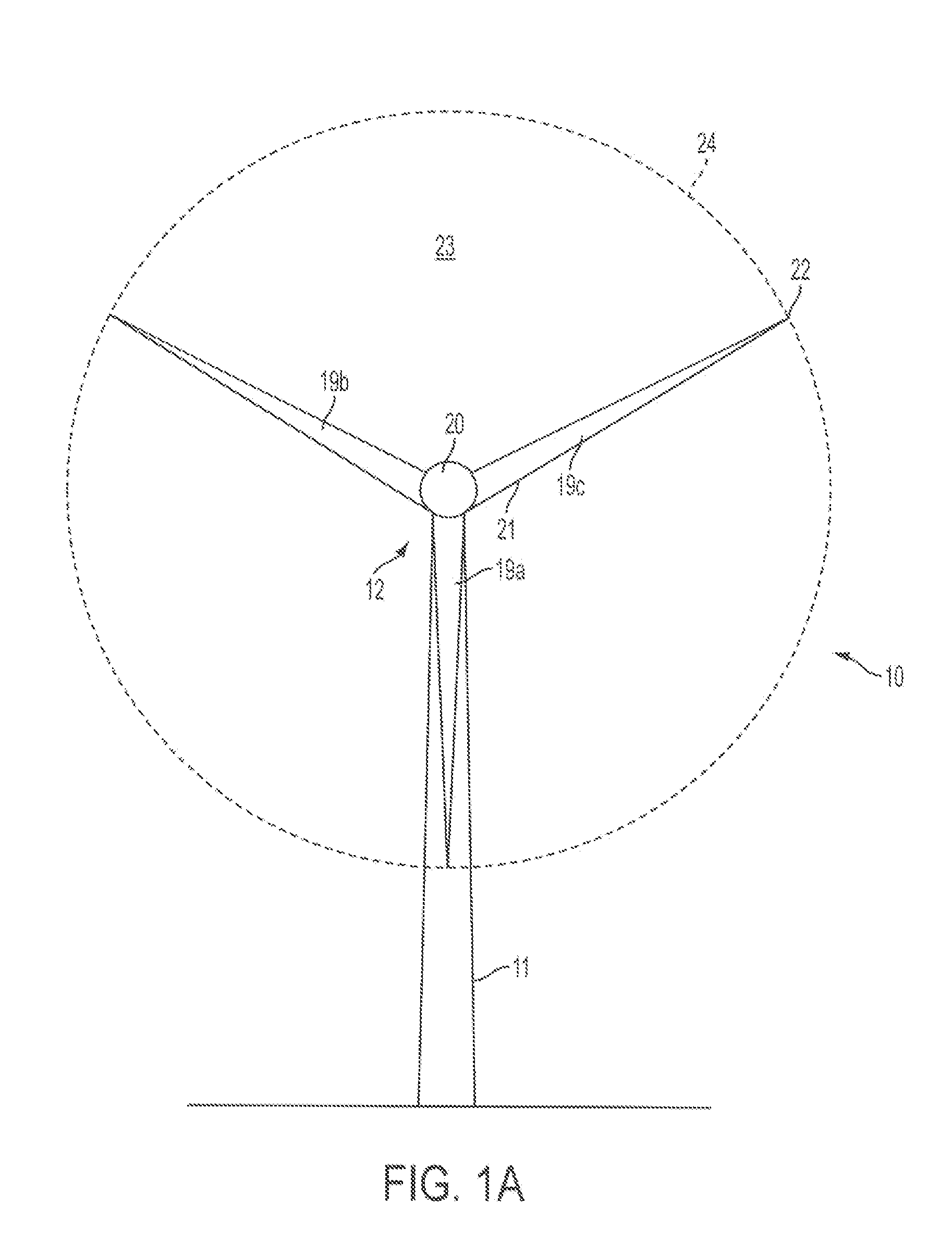Wind turbines
a technology of wind turbines and blades, applied in the direction of propellers, engine control parameters, and avoiding excessive blade deflection, can solve the problems of blade tip displacement, blade blade and tower collision, and reduce performance, so as to increase the tip-to-tower distance, reduce lift, and increase the speed of the rotor
- Summary
- Abstract
- Description
- Claims
- Application Information
AI Technical Summary
Benefits of technology
Problems solved by technology
Method used
Image
Examples
Embodiment Construction
[0043]FIG. 2 shows a horizontal axis upwind wind turbine 100 comprising a tubular tower 102 supporting a nacelle 104 at its upper end 106. The nacelle 104 in turn supports a rotor 108, which includes three equally-spaced rotor blades 110a, 110b, 110c extending radially from a central hub 112 when viewed from the front as shown in FIG. 4. Again, only two blades 110a, 110b are shown in the side view of FIG. 2. A wind-monitoring device 114 including an anemometer 115 and a vane 116 is mounted above the nacelle 104. The anemometer 115 monitors wind speed, whilst the vane 116 monitors wind direction above the tower 102 within the wake 117 (FIG. 2) of the rotor 108 corresponding to an upper half of the rotor disc 118. The upper half of the rotor disc 118 is the semi-circular region 119 above the horizontal dashed line 120 in FIG. 4.
[0044]A pressure-sensing device 121 comprising an array of sensors 122 is arranged at an outer surface 124 of the tubular tower 102 within the wake 117 of the ...
PUM
 Login to View More
Login to View More Abstract
Description
Claims
Application Information
 Login to View More
Login to View More - R&D
- Intellectual Property
- Life Sciences
- Materials
- Tech Scout
- Unparalleled Data Quality
- Higher Quality Content
- 60% Fewer Hallucinations
Browse by: Latest US Patents, China's latest patents, Technical Efficacy Thesaurus, Application Domain, Technology Topic, Popular Technical Reports.
© 2025 PatSnap. All rights reserved.Legal|Privacy policy|Modern Slavery Act Transparency Statement|Sitemap|About US| Contact US: help@patsnap.com



